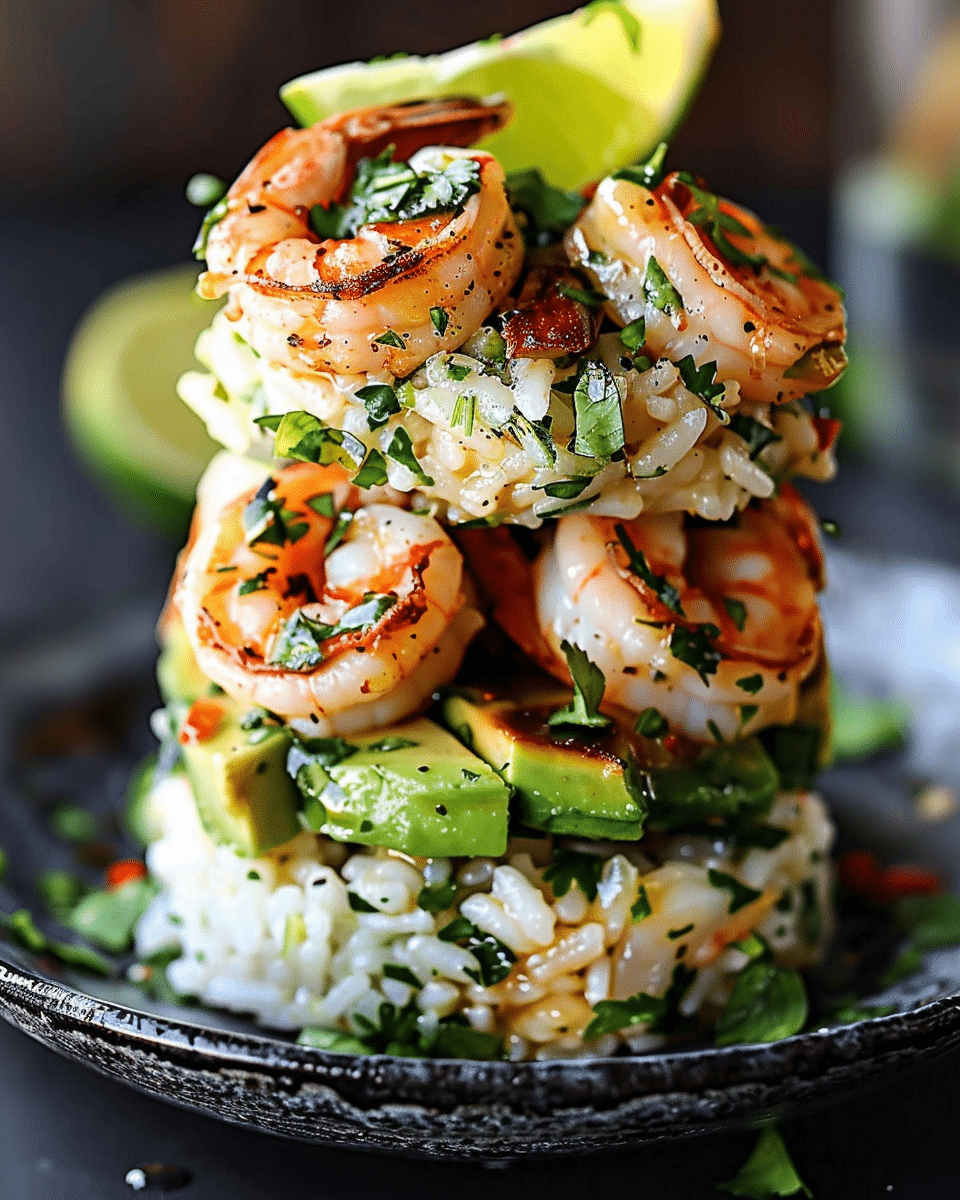Roscioli Roman Cacio e Pepe Recipe is more than just a pasta dish; it’s a culinary experience that embodies the rich flavors and traditions of Roman cuisine. This iconic dish, made with the simplest of ingredients, offers a burst of flavor that will transport you straight to the heart of Italy. This article will delve into the history, the unique preparation method, and the variations of this beloved dish.
History of Cacio e Pepe
Cacio e Pepe, translating to “cheese and pepper,” is a timeless Roman dish that epitomizes the elegance of Italian cuisine with its simplicity and robust flavors. The dish’s origins are deeply rooted in ancient Roman times, making it one of the oldest pasta recipes in Italian history.
Jump Directly To Roscioli Roman Cacio e Pepe Recipe
Ancient Origins
Historically, Cacio e Pepe was the ideal meal for Italian shepherds. The ingredients – pecorino cheese (cacio), black pepper (pepe), and pasta – were chosen for their longevity and resistance to spoilage, essential for shepherds who spent long periods away from home. Pecorino, made from sheep’s milk, was readily available, and black pepper provided not only flavor but also helped to preserve the cheese. Learn more about Italian comfort food traditions here.
Evolution Over Time
Over the centuries, Cacio e Pepe has transcended its humble beginnings to become a beloved staple in Roman cuisine. It has retained its simplicity, with modern recipes still using the traditional three ingredients. The dish’s preparation has been refined over time, with techniques focusing on creating a creamy emulsion of cheese and pasta water to coat the pasta, rather than a melted cheese mixture.
Global Recognition
Today, people worldwide celebrate Cacio e Pepe as a symbol of Roman culinary tradition. It graces the menus of countless Italian restaurants worldwide, from the streets of Rome to upscale eateries in major cities around the globe. The dish’s international popularity has led to various interpretations and twists, but the essence of Cacio e Pepe – its simplicity and depth of flavor – remains unchanged.
Cultural Significance
In contemporary Italy, Cacio e Pepe holds a special place as a comfort food and a representation of Roman heritage. It is often prepared at home for family meals and is a must-try dish for tourists visiting Rome. The dish is also a highlight in food festivals and culinary events celebrating Italian culture and cuisine.
The Roscioli Method
The Roscioli family, renowned for their culinary expertise in Rome, has perfected the art of making Cacio e Pepe, bringing out the best flavors and textures from this simple yet exquisite dish. Their method, known as the Roscioli Method, emphasizes the importance of quality ingredients and precise techniques to achieve the perfect Cacio e Pepe.
Creating the Perfect Cheese Cream
One of the distinctive features of the Roscioli Method is the preparation of the cheese cream or “crema.” The process begins with finely grating high-quality Pecorino Romano cheese. Combine the cheese with freshly ground black pepper and some warm pasta water. Stir this mixture until it forms a smooth, creamy sauce that evenly coats the pasta, ensuring flavorful bites.
Cooking the Pasta
In the Roscioli Method, the choice of pasta is crucial. Traditional choices like tonnarelli or spaghetti are preferred. The pasta is cooked in boiling water without salt until it is fully cooked. The absence of salt in the water allows the salty flavor of the Pecorino Romano to shine in the final dish.
Combining Pasta and Cheese Cream
Once the pasta is cooked, it is immediately added to the prepared cheese cream. The hot pasta helps in further melting the cheese, creating a rich and creamy sauce that clings to each strand of pasta. The pasta is tossed in the sauce over low heat, allowing it to absorb the flavors of the cheese and pepper thoroughly.
Final Touches
The final step in the Roscioli Method involves additional seasoning and presentation. Sprinkle extra black pepper on top for added heat, and add more grated Pecorino Romano for extra richness. Then, serve the dish immediately to enjoy the pasta at its best – warm, creamy, and brimming with cheese and pepper flavors.
Roscioli Roman Cacio e Pepe Recipe
Ingredients:
- Kosher salt
- 1 pound tonnarelli or other long pasta
- 3 tablespoons extra-virgin olive oil
- 1 teaspoon freshly cracked black pepper
- 1 3/4 cups finely grated Pecorino Romano (about 3 1/2 ounces)
- 1 cup finely grated Parmesan (about 2 ounces)
Directions:
- Bring a large pot of salted water to a boil. Add the pasta and cook until al dente.
- While the pasta is cooking, heat the extra-virgin olive oil in a large skillet over medium heat. Add the freshly cracked black pepper and toast until fragrant.
- Reserve 2 cups of pasta water, then drain the pasta.
- Add 1 cup of the reserved pasta water to the skillet and bring to a simmer.
- Add the pasta and the Pecorino Romano to the skillet, stirring everything together until the cheese is melted and the sauce is creamy.
- If the sauce is too thick, add more reserved pasta water a tablespoon at a time until the desired consistency is reached.
- Remove the skillet from the heat and stir in the finely grated Parmesan.
- Serve the Roscioli Roman Cacio e Pepe hot, garnished with additional Pecorino Romano or Parmesan if desired.
Prep Time: 10 minutes | Cooking Time: 15 minutes | Total Time: 25 minutes
Kcal: 420 kcal | Servings: 4 servings
Variations of Roscioli Roman Cacio e Pepe Recipe

Cacio e Pepe is a classic Roman dish celebrated for its simplicity and robust flavors. While the traditional recipe involves just three key ingredients – pasta, Pecorino Romano cheese, and black pepper – various chefs and home cooks have introduced their own unique twists to this iconic dish, creating a myriad of variations that offer different flavors and textures.
Adding Proteins
One common variation of Cacio e Pepe involves the addition of proteins. Some chefs add guanciale (pork cheek) or pancetta to the dish, giving it an extra layer of flavor and richness. The crispy, salty bits of pork complement the creamy cheese sauce, adding complexity to the dish.
Incorporating Vegetables
For a fresher and lighter version, some variations of Cacio e Pepe include vegetables. People often add ingredients like asparagus, peas, or zucchini to the pasta, enhancing it with color, texture, and nutrition. This variation is especially popular in spring and summer when fresh vegetables are in abundance.
Using Different Cheeses
While Pecorino Romano is the traditional cheese used in Cacio e Pepe, some variations explore other types of cheese. Chefs may use Parmesan, Grana Padano, or a mix of different cheeses to achieve a unique flavor profile. Each cheese brings its own character to the dish, allowing for a diverse range of flavors.
Alternative Pasta Types
Though spaghetti or tonnarelli are the classic choices for Cacio e Pepe, some variations employ other pasta types. Bucatini, a thick, spaghetti-like pasta with a hole running through the center, is a popular alternative. Others might use short pasta types like rigatoni or penne, which hold the sauce differently and offer a distinct eating experience. Discover the differences with other pasta types here.
Infusing Additional Flavors
To enhance the flavor profile of Cacio e Pepe, some chefs infuse the dish with additional ingredients like garlic, red pepper flakes, or fresh herbs. A hint of lemon zest or a splash of white wine can also elevate the dish, adding brightness and acidity.
The Importance of Quality Ingredients
In the world of cooking, and particularly in dishes as simple and straightforward as Cacio e Pepe, the quality of ingredients used plays a paramount role in determining the final taste, texture, and overall appeal of the dish. The classic Roman dish Cacio e Pepe is a perfect example where high-quality ingredients are essential to bring out the authentic flavors and create a culinary masterpiece.
Pecorino Romano Cheese
Pecorino Romano, one of the oldest cheeses in Italy, is a crucial ingredient in Cacio e Pepe. This hard, salty cheese made from sheep’s milk imparts a rich, robust flavor to the dish. Opting for genuine, high-quality Pecorino Romano ensures that the cheese will melt perfectly to create a creamy, flavorful sauce that coats the pasta evenly.
Freshly Ground Black Pepper
The use of freshly ground black pepper is another vital aspect. Pre-ground pepper can be stale and lack the vibrant, spicy punch that freshly ground pepper provides. The fresh pepper not only contributes to the flavor but also adds a delightful heat and aroma to the dish, enhancing its overall appeal.
Premium Quality Pasta
The choice of pasta is equally significant. Traditional choices like durum wheat pasta ensure a perfect al dente texture that holds cheese and pepper sauce well. Quality pasta provides a superior eating experience, contributing to the taste and consistency of the final dish.
The Impact of Quality Ingredients
- Flavor Enhancement: Quality ingredients pack natural flavors that intensify during cooking, ensuring a flavorful and delicious dish.
- Texture Perfection: High-quality ingredients ensure the right texture – creamy cheese sauce, perfectly cooked pasta, and a harmonious blend of all components.
- Nutritional Value: Quality ingredients are often more nutritious, providing a healthier and more wholesome meal.
- Authenticity: Using traditional, high-quality ingredients guarantees an authentic Cacio e Pepe experience, honoring the rich culinary heritage of Rome.
Serving Suggestions for Cacio e Pepe
Serving Cacio e Pepe in the right way is as crucial as its preparation. The presentation and accompaniments can enhance the dining experience, making it more enjoyable and memorable. Below are serving suggestions for Cacio e Pepe, ensuring the dish delights both the palate and eyes.
Presentation
- Serve Hot: Serve Cacio e Pepe immediately while it’s still hot to savor the creamy cheese texture and the aroma of freshly ground pepper.
- Use Warm Plates: Serve the pasta on warm plates to ensure that it remains hot for a longer time, allowing diners to savor the dish at the right temperature.
- Garnish: A final garnish of freshly grated Pecorino Romano and a sprinkle of black pepper can enhance the visual appeal and add an extra layer of flavor.
Accompaniments
- Simple Green Salad: Pair Cacio e Pepe with a simple green salad dressed with extra-virgin olive oil and balsamic vinegar. The freshness of the salad balances the richness of the pasta, providing a well-rounded meal.
- Roasted Vegetables: Serve Cacio e Pepe with a side of roasted vegetables like bell peppers, zucchini, or cherry tomatoes. The sweetness of the roasted vegetables complements the salty and peppery flavors of the pasta.
- Italian Bread: Offer a side of crusty Italian bread to soak up the creamy sauce, ensuring none of it goes to waste.
- Wine Pairing: Complement Cacio e Pepe with a glass of crisp white wine. A Roman white wine like Frascati or a light Pinot Grigio pairs beautifully with the dish, enhancing its flavors.
Portion Size
- Moderate Portions: Serve moderate portions to ensure that diners enjoy the dish thoroughly without feeling overwhelmed. It allows diners to appreciate the flavors and textures without feeling overly full.
Dessert
- Follow with a Light Dessert: Conclude the meal with a light and refreshing dessert. A lemon sorbet or a serving of fresh fruit is a perfect choice, providing a sweet and refreshing end to the meal.
FAQs
Why Cacio e Pepe is so hard to perfectly execute?
Cacio e Pepe requires precise timing and temperature control to create a creamy sauce without clumping or becoming greasy. Mastery of emulsifying cheese and pasta water is essential.
What is Cacio e Pepe sauce made of?
Cacio e Pepe sauce is made of finely grated Pecorino Romano cheese, freshly ground black pepper, and starchy pasta water, combined to form a smooth, creamy sauce.
Why is my Cacio e Pepe not creamy?
If your Cacio e Pepe is not creamy, it may be due to the incorrect cheese-to-water ratio or not using starchy enough pasta water. Ensure to use finely grated cheese and adequate warm pasta water.
How do you use jarred Cacio e Pepe sauce?
To use jarred Cacio e Pepe sauce, heat it gently in a saucepan, then toss with cooked pasta. Adjust consistency with pasta water and finish with extra cheese and pepper.
How do you avoid stringy cheese in Cacio e Pepe?
Avoid stringy cheese in Cacio e Pepe by using finely grated Pecorino Romano and adding it to warm (not hot) pasta water. Stir continuously to ensure smooth melting.
What is Cacio e Pepe secret?
The secret to perfect Cacio e Pepe lies in using quality ingredients, mastering the emulsification of cheese and pasta water, and ensuring the right heat level for a creamy, non-clumpy sauce.
Conclusion
In conclusion, the Roscioli Roman Cacio e Pepe recipe is a celebration of the simplicity and flavor of Italian cuisine. The dish, made with high-quality ingredients and a tried-and-true method, offers a taste of Rome in every bite. Whether you are a seasoned cook or a beginner, preparing Cacio e Pepe at home will surely delight your taste buds and bring a piece of Italy to your dining table. Enjoy the process of cooking and savor the delicious outcome – Buon Appetito!









